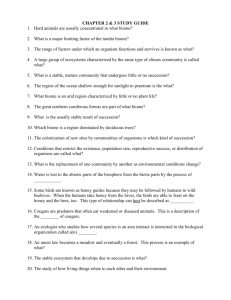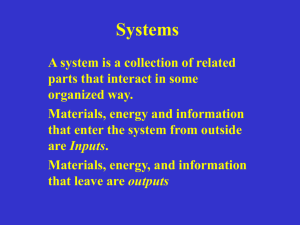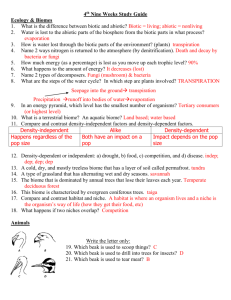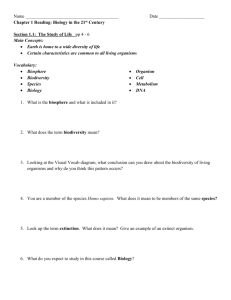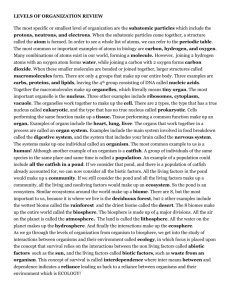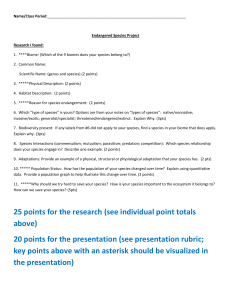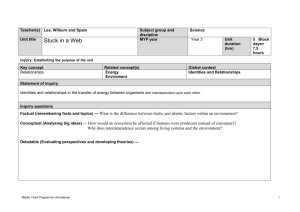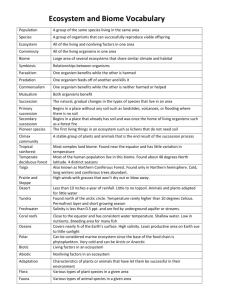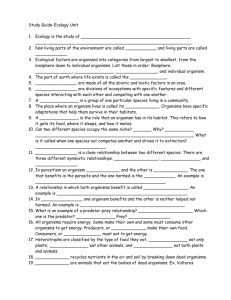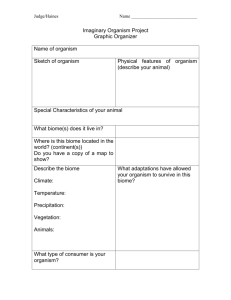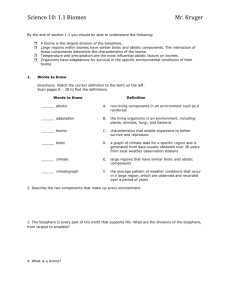Ecology Study Guide
advertisement
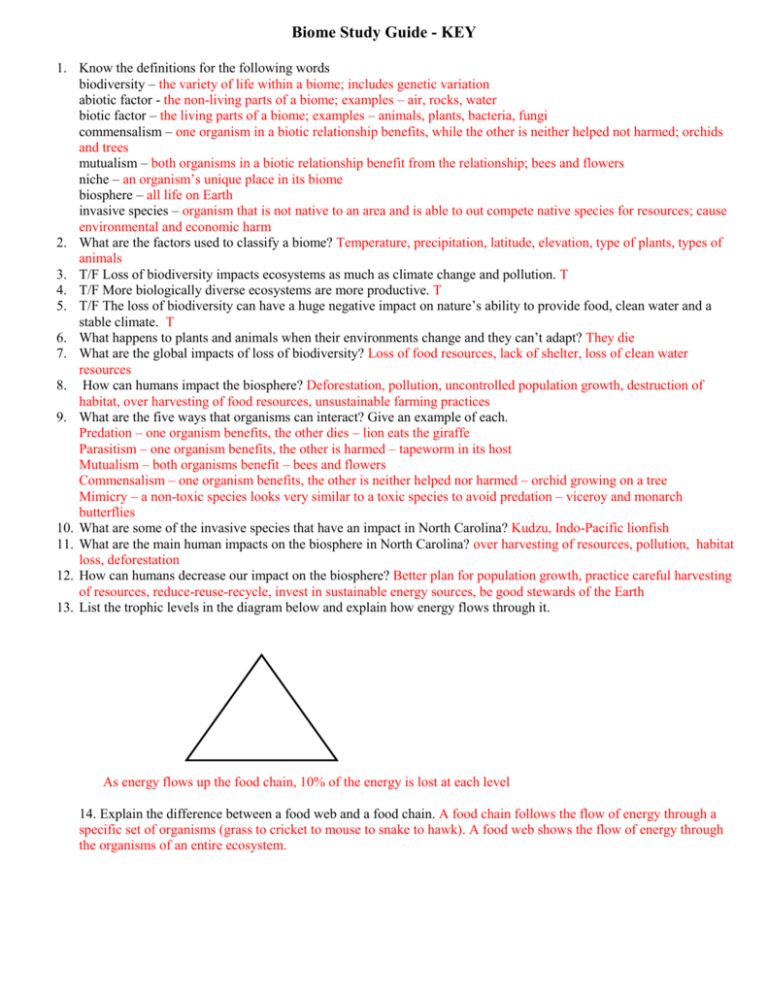
Biome Study Guide - KEY 1. Know the definitions for the following words biodiversity – the variety of life within a biome; includes genetic variation abiotic factor - the non-living parts of a biome; examples – air, rocks, water biotic factor – the living parts of a biome; examples – animals, plants, bacteria, fungi commensalism – one organism in a biotic relationship benefits, while the other is neither helped not harmed; orchids and trees mutualism – both organisms in a biotic relationship benefit from the relationship; bees and flowers niche – an organism’s unique place in its biome biosphere – all life on Earth invasive species – organism that is not native to an area and is able to out compete native species for resources; cause environmental and economic harm 2. What are the factors used to classify a biome? Temperature, precipitation, latitude, elevation, type of plants, types of animals 3. T/F Loss of biodiversity impacts ecosystems as much as climate change and pollution. T 4. T/F More biologically diverse ecosystems are more productive. T 5. T/F The loss of biodiversity can have a huge negative impact on nature’s ability to provide food, clean water and a stable climate. T 6. What happens to plants and animals when their environments change and they can’t adapt? They die 7. What are the global impacts of loss of biodiversity? Loss of food resources, lack of shelter, loss of clean water resources 8. How can humans impact the biosphere? Deforestation, pollution, uncontrolled population growth, destruction of habitat, over harvesting of food resources, unsustainable farming practices 9. What are the five ways that organisms can interact? Give an example of each. Predation – one organism benefits, the other dies – lion eats the giraffe Parasitism – one organism benefits, the other is harmed – tapeworm in its host Mutualism – both organisms benefit – bees and flowers Commensalism – one organism benefits, the other is neither helped nor harmed – orchid growing on a tree Mimicry – a non-toxic species looks very similar to a toxic species to avoid predation – viceroy and monarch butterflies 10. What are some of the invasive species that have an impact in North Carolina? Kudzu, Indo-Pacific lionfish 11. What are the main human impacts on the biosphere in North Carolina? over harvesting of resources, pollution, habitat loss, deforestation 12. How can humans decrease our impact on the biosphere? Better plan for population growth, practice careful harvesting of resources, reduce-reuse-recycle, invest in sustainable energy sources, be good stewards of the Earth 13. List the trophic levels in the diagram below and explain how energy flows through it. As energy flows up the food chain, 10% of the energy is lost at each level 14. Explain the difference between a food web and a food chain. A food chain follows the flow of energy through a specific set of organisms (grass to cricket to mouse to snake to hawk). A food web shows the flow of energy through the organisms of an entire ecosystem.
